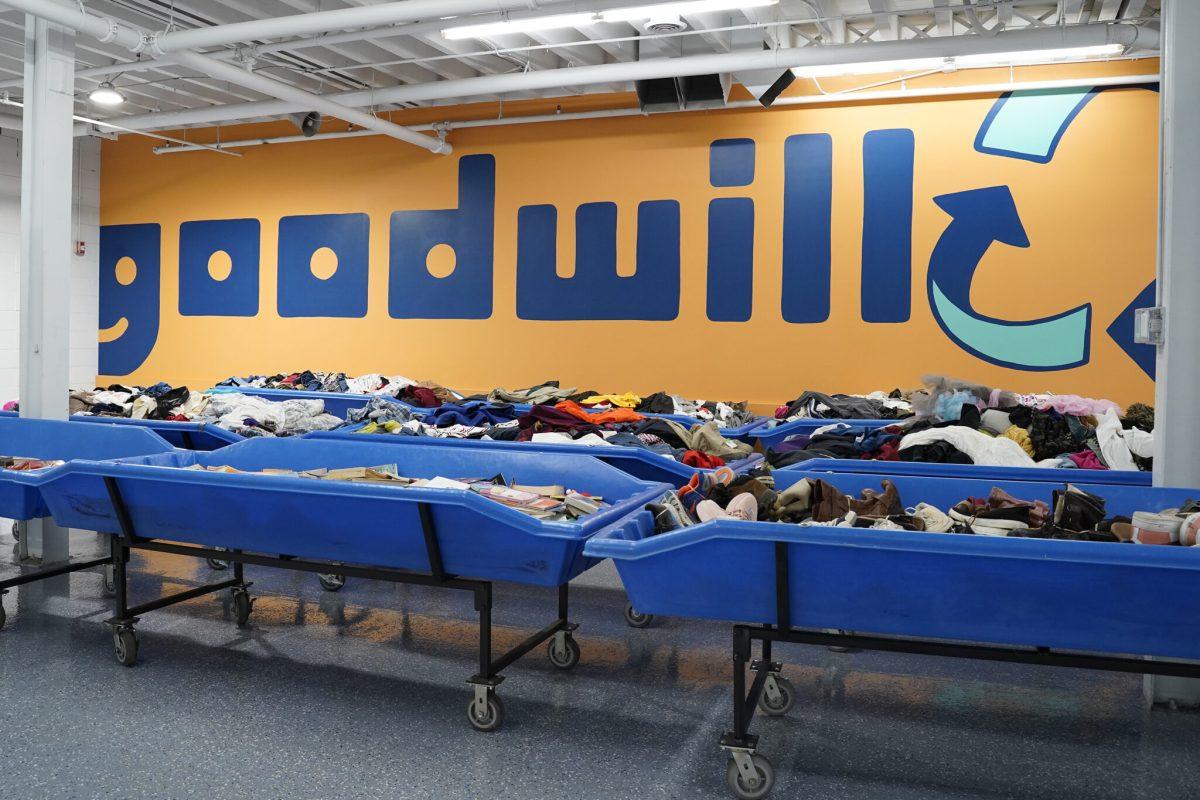
Photo // GoodwillTHE BINS. Goodwill is a very popular thrifting spot in America, despite some criticisms of its pricing, focus on profit-maximization and tendency to pay disabled workers below the minimum wage.
By: Rafael Tortolero & Cienna King
Photographers and Staff-Writers
Although thrifting has been on the rise in recent years, this wasn’t always the case. Before online shopping became dominant, malls, outlets and department stores were favored. In the internet era, fast-fashion companies have saturated the market with garments that entice consumers with absurdly low prices, only to become unwearable after just a few washes.
In the past, buying second-hand clothes was looked down upon, and people wearing clothes from the thrift store might have been singled out or made fun of. Over time, that stigma has changed, and going to resale shops, thrift stores and even antique stores for clothes has evolved into a cool, pervasive subculture.
The main reason some people switch to thrifting is the uniqueness of some pieces. Mainstream stores like Forever 21, Hollister or Tilly’s often make similar, standardized products. At a thrift store, you’re usually able to find older pieces that people have donated and don’t want anymore, even though many are still attractive and in great condition. These tend to look different than what we see in daily fashion and are sometimes even considered “vintage”, making thrifting an appealing option for people who want to stand out or make their wardrobe more interesting.
Because of the uniqueness of the clothes thrifters may find, buying second hand can also help people develop their personal style. You might find pieces that will help you step out of your comfort zone and try new things, like new colors, cuts or brands that you might’ve never thought of wearing before because they aren’t presented by mainstream fashion brands.
A lot of people also switch to thrifting to save money, which is a big reason it has historically been stigmatized. According to CNBC, going thrift shopping can save shoppers nearly an average of $150 a month, or $1,760 a year. Even if some items are more on the expensive side, those price tags are usually still loads cheaper than buying the same item new.
Thrifting is also a way to easily include sustainability in your daily life. Not only are you reducing waste by giving items a second life, but you’re also not promoting demand for newer products which prevents new resources from entering the textile industry, a very environmentally demanding sector. It’s also a way of supporting local businesses and charities – most thrift stores are run by non-profit organizations, and supporting them opens up more options for those who may want to avoid Goodwill or Salvation Army for conflicts with those companies’ values.
For example, Resale to the Rescue in Mishawaka financially assists local animal welfare organizations with their proceeds.
According to CNBC, 82% of Americans buy or sell pre-owned goods, so if you enjoy thrift shopping, you aren’t alone.